an installation for swarms of midges on the banks of lakes and other bodies of water
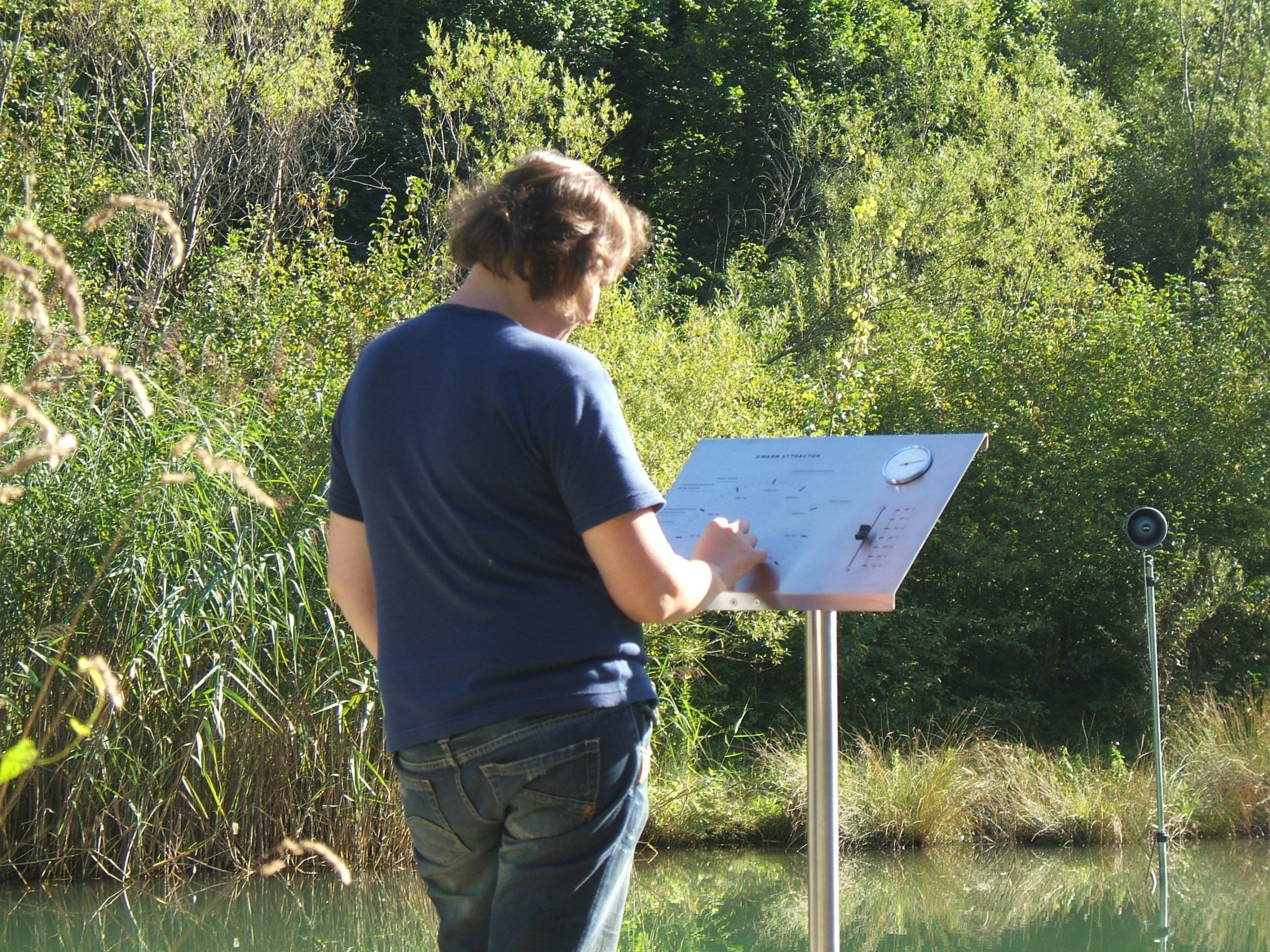
the idea
double helix swing is an installation which investigates the swarms of midges that can be found on the banks of lakes and other bodies of water. Swarms of midges are intriguing entities: without any apparent logic theyform at irregular intervals along the bank: towers of midges flying in circles – although it seems that their flight path is in fact angular. It is as though they fly in one direction, then they suddenly stop and fly off in another. Each swarm develops its own speed and rhythm. And each swarm formsitself into an axis which is circled by the midges in both directions: a flying double-helix.
The swarms are made up of male midges aiming to attract females for mating.Attraction and courtshipoccurs by wing beat which differs between the male and female insects. Based on these characteristics a video and sound installation is to be developed.
In order to observethe swarms they will be attracted by sounds of the female wing beat. Various sound sources (loud speakers) will be distributed at intervals in shallow water. At a suitable distance from the sound source a video camera will be located on the bank to record any swarms which may form. The camera is set up on a platform which can be accessed from the bank.Passers-by can approach thecamera and look for the swarms in the viewfinder. If a camera detects a formation it then remains still, a video image is recorded and is sent to a central computer.

screen prints of the indoor installation:
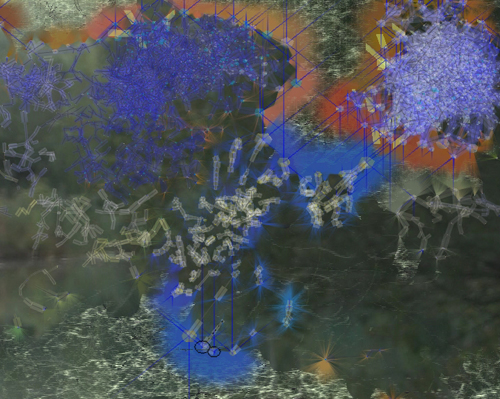
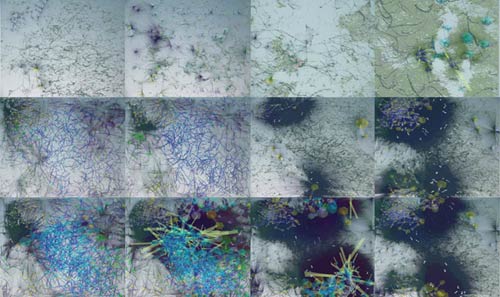
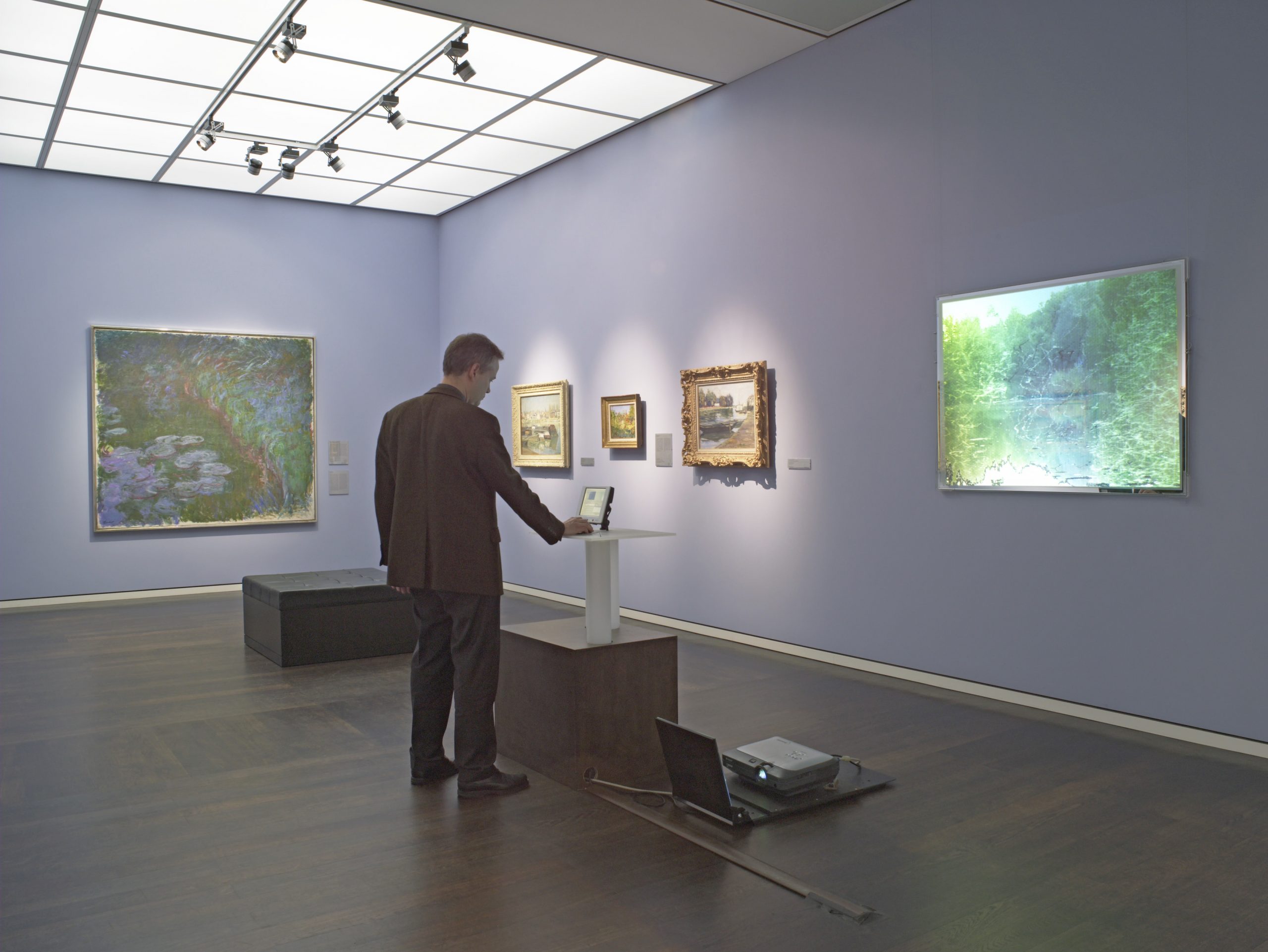
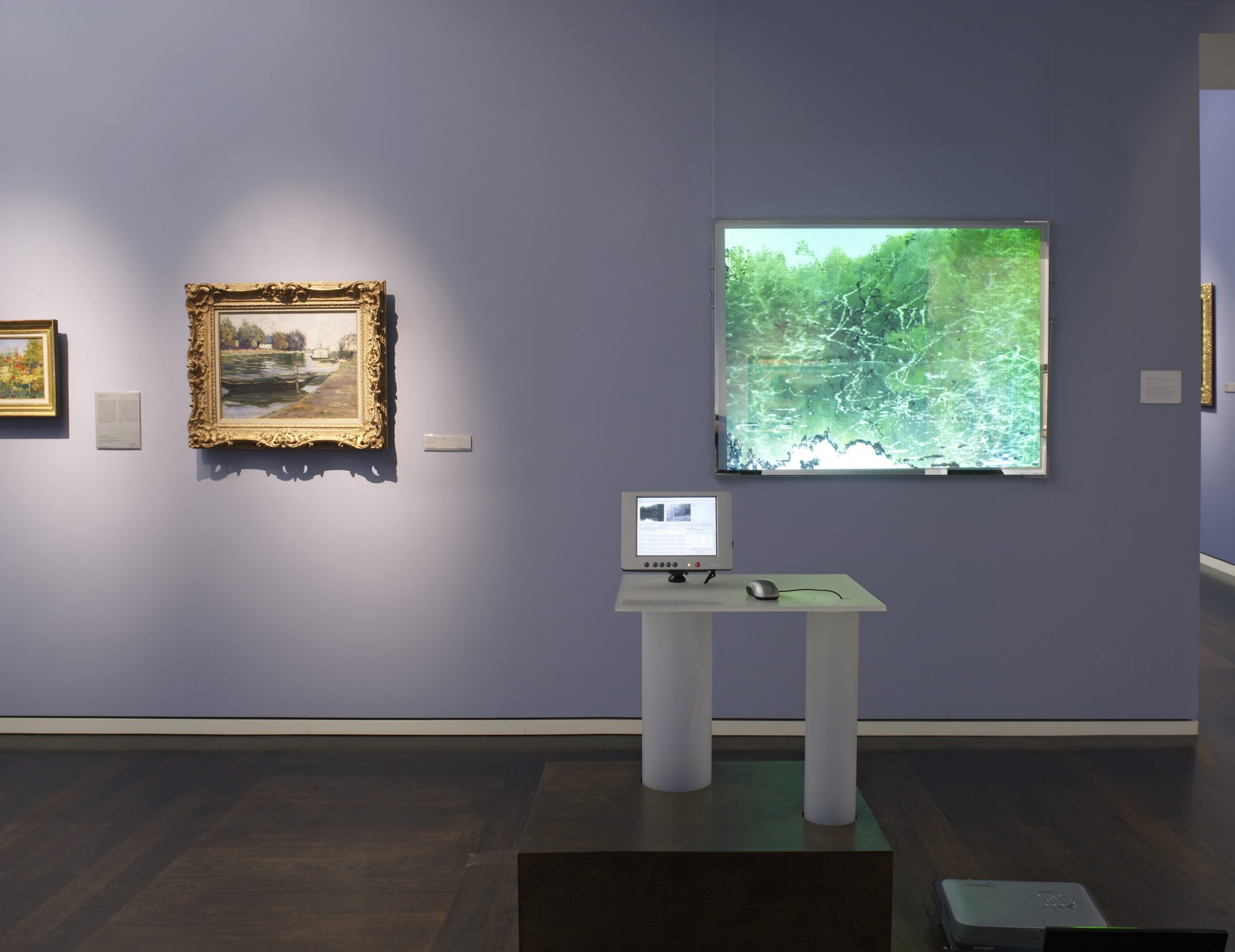
the set up
a series of loudspeakers were placed on a platform situated over shallow water to emit the sounds of the beating of a female mosquitos wings. A video camera, located at a certain distance from the source of the loudspeakers, records images of the swarms that are produced. These images are sent to a computer that analyses the movements and visualises them on the screen in the form of traces.

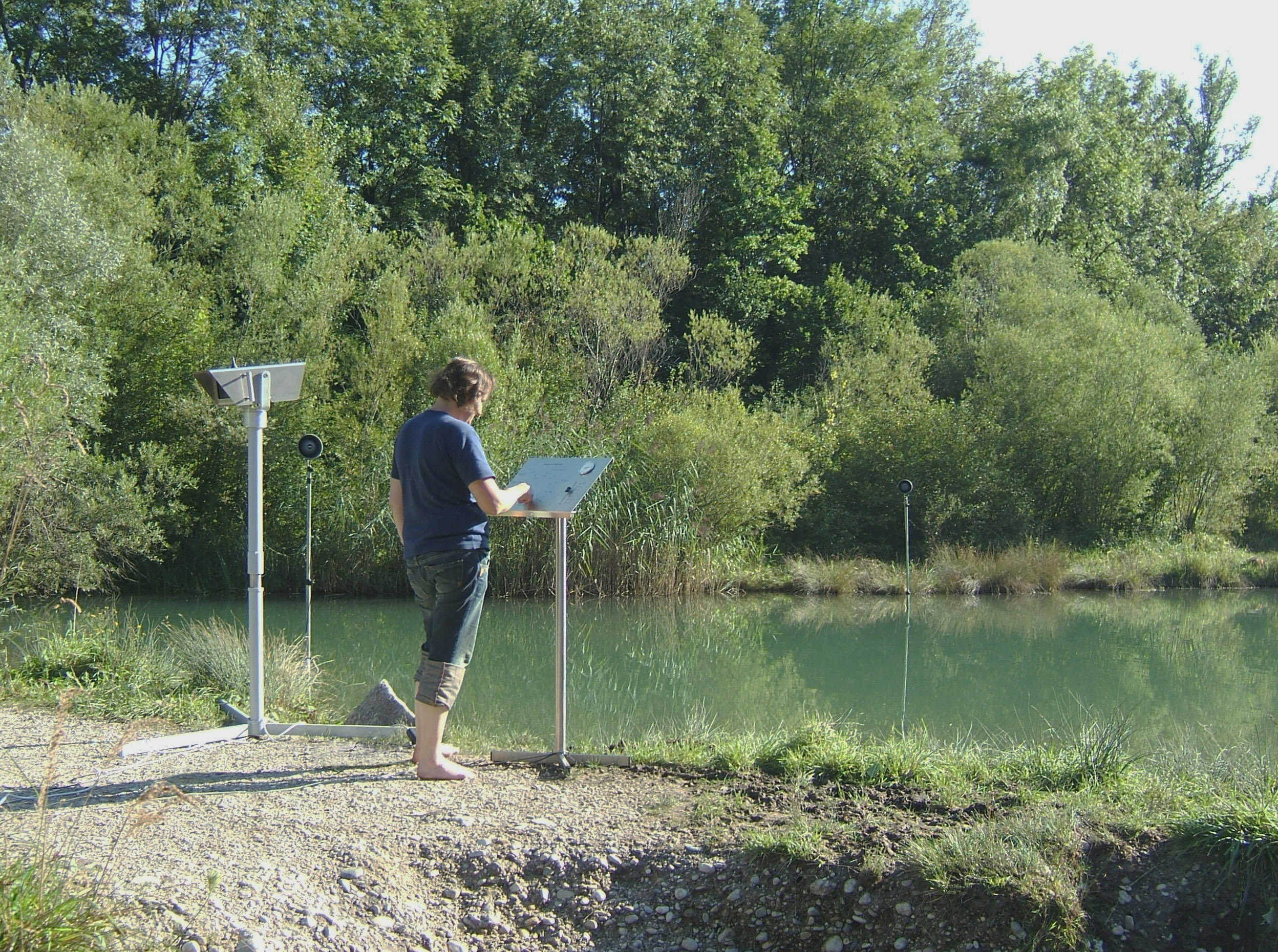
The camera ist build to be used by passers-by, they can locate possible swarms by adjusting the camera (turning, zooming etc.).
The loudspeakers around the camera emit the sounds of various insects’ wing beats. Using the switch, passers-by can try attracting insects using the wing beat sounds of the females of different species.
the software
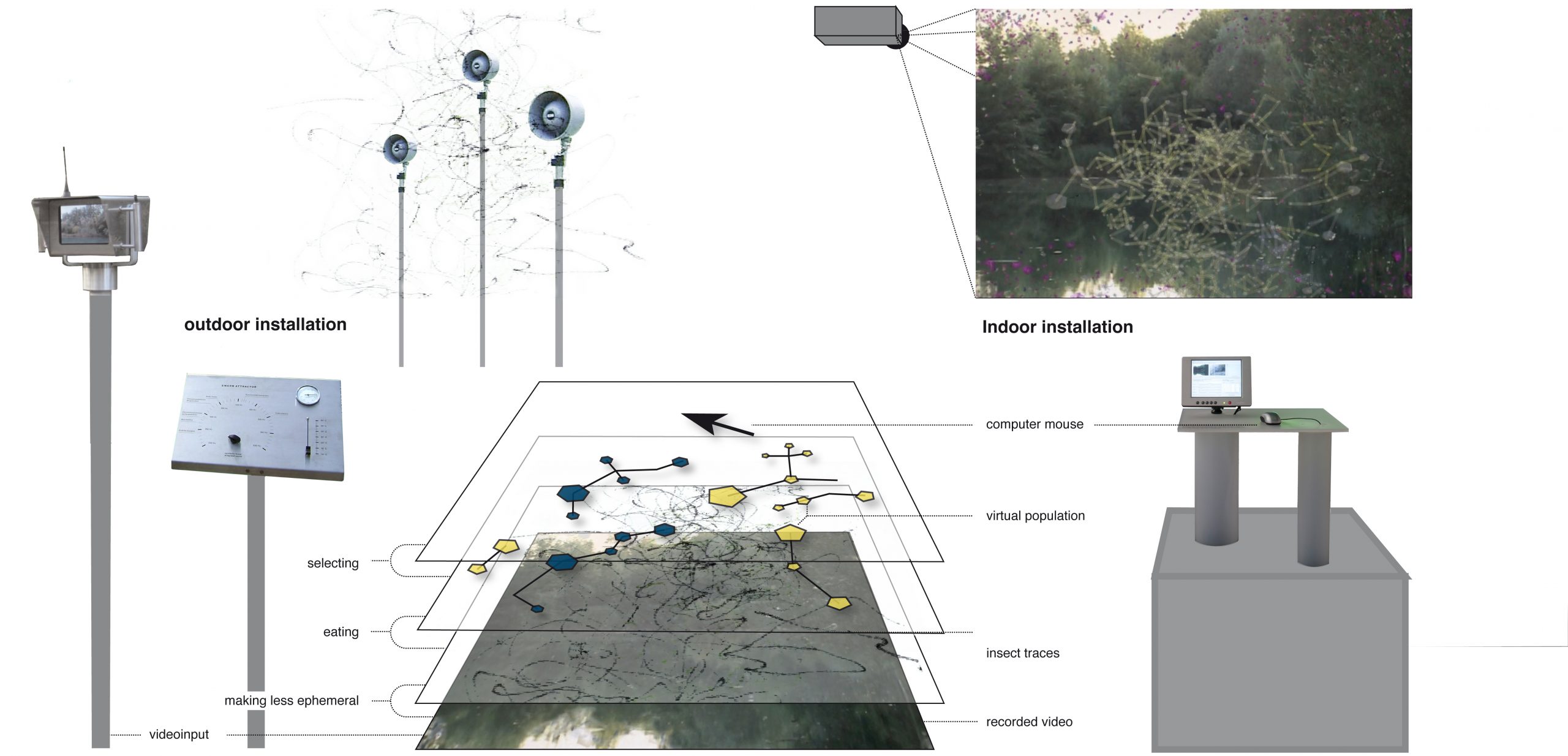
The virtual world consists of three layers:
- the video of the midges, which runs in the background.
- the tracks of the midges, which are signified as nutrition (these are green tracks).
- the virtual creatures searching for and eating the tracks of the midges
The creatures, survival depends primarily on the video, coming from the outdoor camera.
The form of the tracks generates a structure which serves as “food” to a number of virtual creatures. These virtual creatures are capable of evolving, so adapting better and better to the tracks generated by the movements of the real mosquitoes. The behaviour of the virtual creatures depends, therefore, on the real environment, but is also conditioned internally by a virtual “genetic code” of programming and behaviour. This code can in turn be manipulated by the user of the installation.

The intake of nutrition is regulated by a buffer, which stores all the food (that is the tracks) of the midges. The creatures have a variable food search radius. This radius depends on the velocity of the creatures. If they move fast, the search radius doesn’t have to be so big as when they are more or less immobile.
The creatures never eat all the food at once. As they eat only a certain percentage of the food found, they are able to remember where nutrition is located. The amount of food depends on the number of things moving on the video, coming from the camera. Using the sound, a feedback loop is produced: if there is too much food on the screen, the sound from the loudspeakers is muted or just changed, so that the midges are no longer attracted.
The creatures develop different forms. Every animal has a virtual gene, which defines its movement and its form. The form comprises the number of legs, the density of cells and the density of branches per node.
In the beginning there are three different types of creatures, but later on visitors can define new ones. If a creatures is replicated, a random operation defines whether the animal will be changed or not. Then, another random operation partially changes the animal’s code. While the creature is young, it will only have a few cells. But as it grows, it follows the form which is predefined in the gene. It grows until a certain, adjustable energy level is reached. Then it gives birth to several new creatures.
If the creature becomes big, it is possible that the cells will pull in different directions. Then the creature breaks in two. Both parts survive, one of them with the original code, the other with the new small form gene.
technology:
The installation can be shown as an indoor installation with or without the camera. The camera can be shown outdoor during summer closed to rivers or lakes. But it can also be shown indoor. Then, a virtual world is shown on the screen in which the visitors can search for swarms of midges.
For the installation without the camera you need:
- 1 Linux-PC 3,2 GHz, 1 GB Ram, 3D-accelerated graphic card, soundcard (has to be shiped)
- 1 stand (has to be shiped)
- 1 Video Projectore
- 2 Soundboxes (activ)
For the camera the following material is needed:
- Camera (special design, has to be shiped)
- 1 Linux-PC 3,2 GHz, approx. 1 GB Ram, mp2-encoder videocard, receiver
- Switcher for loudspeakers
- 5 loudspeakers
authors:
Concept: Ursula Damm
Programming: Christian Kessler
Sound: Yunchul Kim
A detailed description of the installation can be found in “The systemic image” by Inge Hinterwaldner, MIT Press 2017